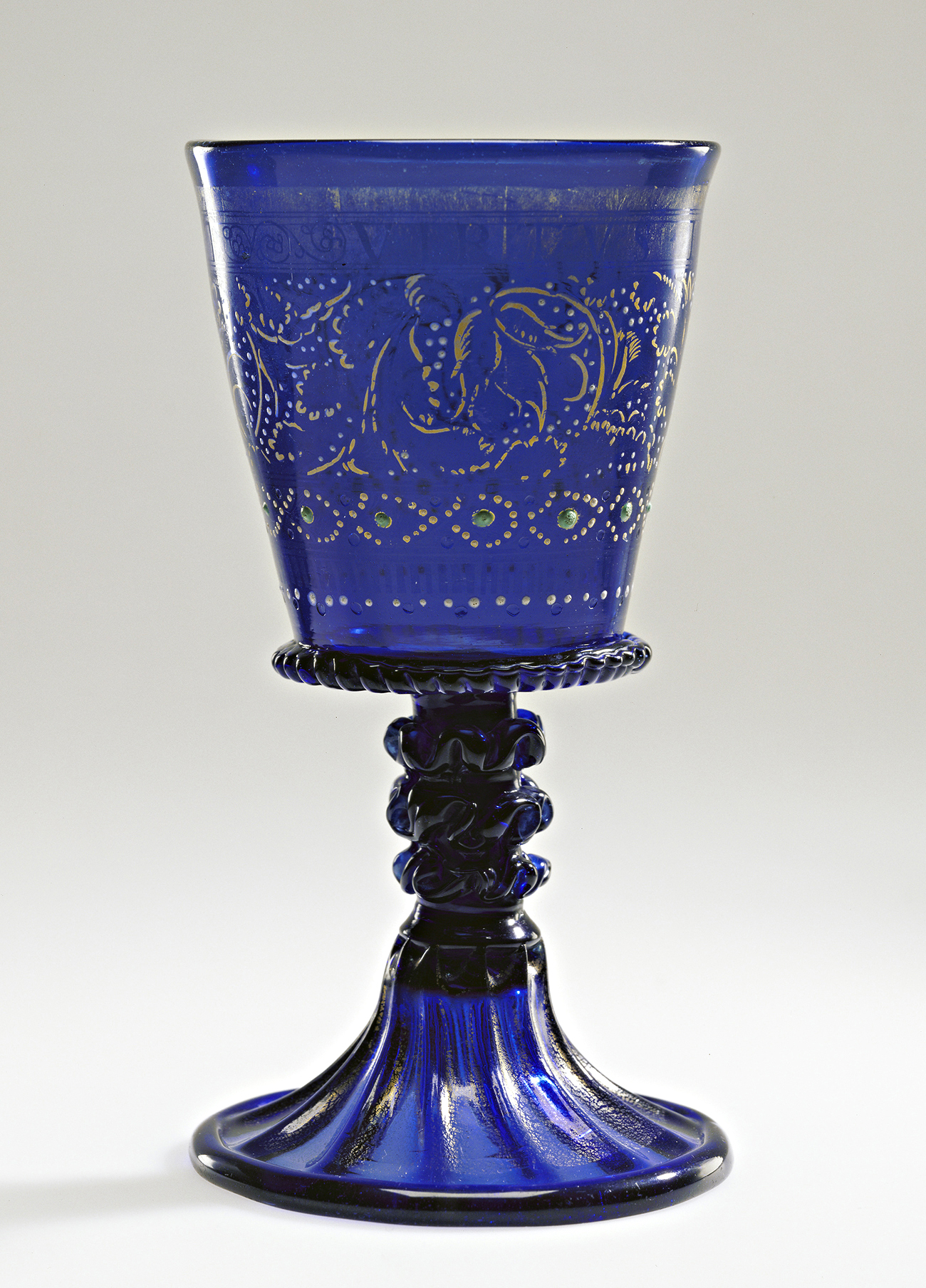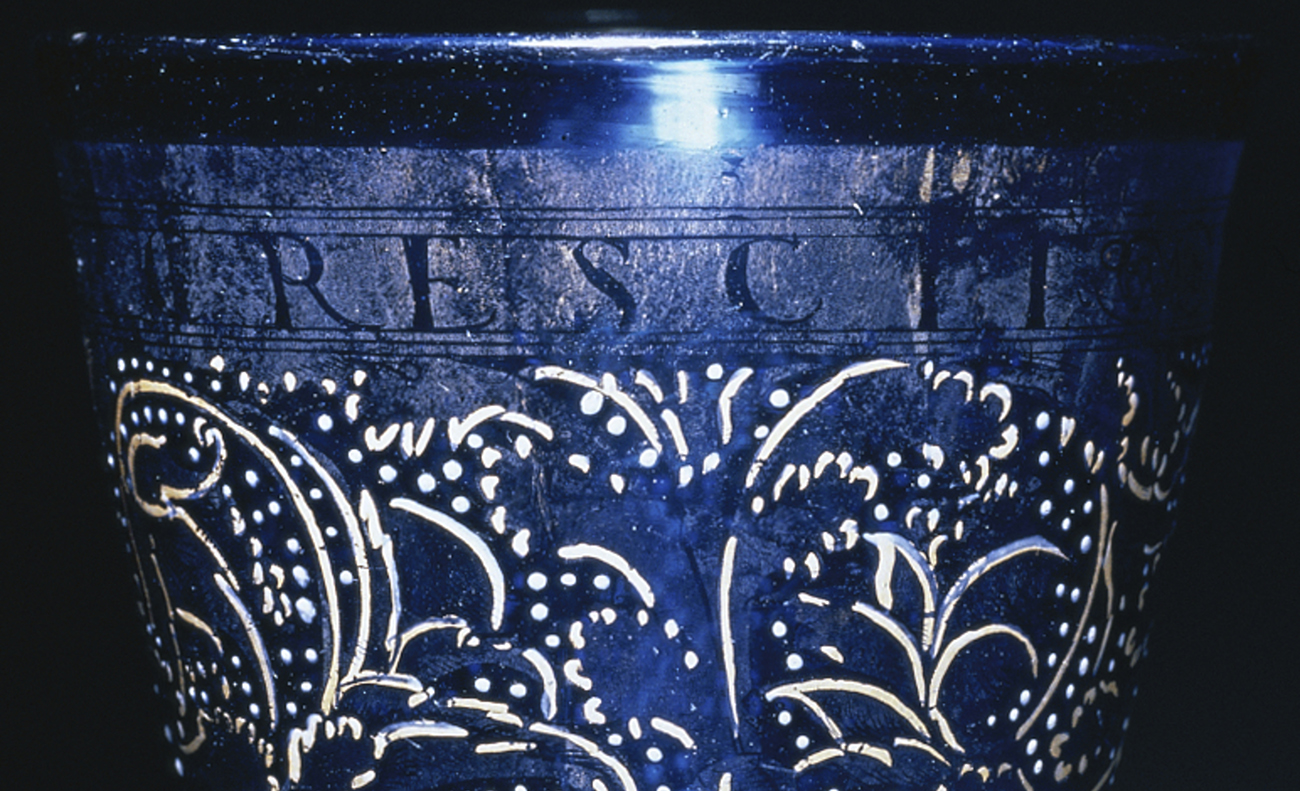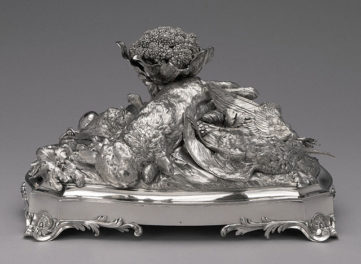
Goblet, about 1500, Italian, made in Murano (Veneto). Free- and mold-blown cobalt-blue glass with gold leaf, enamel, and applied decoration, 7 1/16 in. high x 3 13/16 in. diam. The J. Paul Getty Museum, 84.DK.534. Digital image courtesy of the Getty’s Open Content Program
This glass goblet was made more than 500 years ago. It’s tempting to picture it filled with wine, adorning a candlelit Renaissance dinner table. I recently dropped by the glass gallery, one of my favorite spaces at the Getty, and joined visitor Jamie J. from Tennessee in pondering this goblet. She wanted to know, “How many people have drunk out of this glass since it was first made?”
The answer, as I found out: Not nearly as many as you’d think.
The glass has a functional purpose, of course, but it’s also a luxury collectible. Glasses like these were expensive even in the Renaissance, made for wealthy merchants and aristocrats who would display them as evidence of their status and artistic eye.
Collecting glass from Venice was particularly in style among wealthy Europeans of the 1600s and 1700s. The most spectacular collection, which still stands at Rosenborg Castle in Copenhagen, is the “Glass Cabinet” built by Danish King Frederik IV, with glass from floor to ceiling, silk wall coverings, and a painting of the god of wine looking down on the entire thing.
In other words, it’s pretty unlikely that many people actually drank out of this goblet over the centuries. But when I brought the question to Getty Museum curator Jeffrey Weaver, he pointed out a hidden clue that suggests that the glass did get handled (and maybe filled with wine, too): Look closely and you can see that the gold paint is worn away in several spots—perhaps by the hands of its original owner.

Everyday tableware, centuries ago as now, was plainer and less expensive. Man with a Glass of Wine, circa 1450, unknown maker. Oil on walnut panel, 63 x 43.5 cm. Musée du Louvre, Paris. Source: Wikimedia Commons
Today, in its peaceful retirement at the Museum, the glass is handled by three people only: a curator in charge of the glass collection, a conservator who specializes in decorative arts, and a preparator who moves the glass if it ever needs to journey around the Museum. Needless to say, none of them ever drinks from it!
Why Is This Glass in a Museum?
The glass is part of the Getty Museum’s decorative arts collection, which is entirely devoted to functional objects—furniture, porcelain, lights, mirrors—that are so beautifully designed and crafted they rise to the level of art. Tucked away in the North Pavilion, one small Museum gallery presents rows of glass drinking vessels, vases, and bowls, including this goblet.

Detail of goblet showing enamel paint and inscribed motto. Digital image courtesy of the Getty’s Open Content Program
Venice, where our goblet was made, was the Silicon Valley of glassmaking in the Renaissance. Venetian glass was famous throughout Europe for its cutting-edge technology, creative shapes, blingy decorations, and simulated gems of enamel paint. The design of this particular goblet, in which nearly the whole bowl is covered with leafy gold ornament, is unusual; another example appears on this beaker in London’s British Museum.
Interesting side note: This glass reveals a story about the talent and skill of immigrants to Europe. Islamic artists created the technique of gilding glass, and Syrian artists specialized in enameling on glass to imitate precious jewels—both of which are seen on our goblet. Perhaps some of them had a hand in its creation.
Objects found in museums today have survived for all sorts of reasons—often because they were cherished and loved by generation after generation. So while we don’t know how many people touched or drank from this glass or who they were, we do know that it was considered precious enough to protect for over 500 years.
PS: To browse more gorgeous glass, see this book in Getty Publications’ Virtual Library, and this article from the Corning Museum of Glass (where they know a thing or two about glass).
_______
Got your own questions? Leave us a comment!




It was so amazing to view the art collection in this museum. I traveled n visited museum in various parts of the world, n I have never seen the vast of porcelain collection ornated with gold gilded bronze add-on to the original piece. Absolutely amazing.